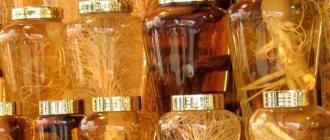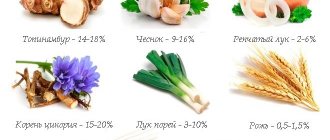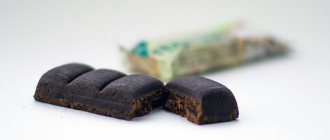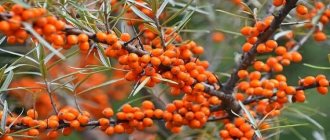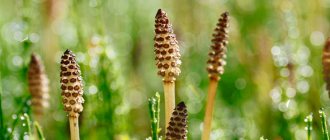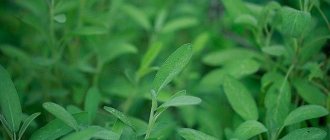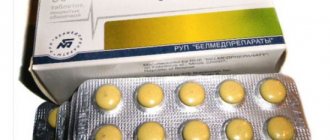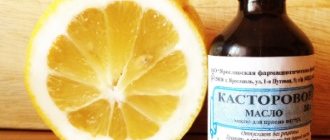Fennel is a plant known to many that helps fight colic in young children. But the scope of fennel is not limited to this alone - plant preparations are effectively used in official and folk medicine for the treatment and prevention of other diseases, in cosmetology, cooking, industry and in everyday life. Many people confuse fennel with dill, but these are two different plants with different properties.
The group of one-two and perennial plants belongs to the Umbrella family and includes 10 species. The most common type is fennel (fennel, Voloshsky dill), which is also used in medicine. The second common type is vegetable or Italian fennel, which has a fleshy stem and is used for food.
In the wild, the grass grows in Southeast Europe, Asia (Western and Central), North Africa, America (South and Central), New Zealand, and in the steppes of the Caucasus. It does not grow only in Antarctica and the Arctic. The plant is cultivated in Russia, especially in the Krasnodar region. Prefers dry slopes, places overgrown with grass, ditches, grows well near roads and housing, including as a weed.
It has medicinal, industrial and nutritional value.
- The plant cake is rich in protein, so it is included in the diet of livestock.
- The oil of the plant is used to deodorize cosmetics and is used in the production of liqueurs and confectionery products as a spice.
- Greens are eaten fresh, stewed with oil and spices, and added to salads.
- The seeds are used in preservation and for various pickles. For example, in China, the seeds are part of a traditional 5-spice mixture.
- The vegetable stem can be stewed, baked, added to broths and soups, salads, and used as a side dish for fish and meat dishes. Goes well with ginger - tea made from fennel and ginger is considered a good anti-cold remedy, also suitable for prevention.
We will consider the medicinal properties and contraindications of fennel in our article.
What is fennel and what does it look like?
The plant is a perennial and belongs to the Umbrella family. There are 2 types of fennel:
- Pharmacy. The herb is intended for the prevention and treatment of various diseases.
- Vegetable (Florentine, Sicilian, Cantino, Romanesco, Rudi). Its use is advisable to give dishes a special aroma.
Important!
Separately, marine and decorative species are distinguished. The stem can reach a height of up to 2 m. It has a branched structure and is distinguished by a light blue coating on the surface. The root is characterized by a bulbous shape. The dissected leaves can be either small or medium. The small yellow flowers resemble umbrellas.
The fruits are small berries that are brown in color and oblong in shape. They taste sweet.
The seeds included in various products resemble dill. They are often used as a seasoning. The seeds are gray-brown in color with a greenish tint. The aroma is similar to anise. It has cucumber freshness and tart bitterness.
Historical facts
This root vegetable originated in the Mediterranean countries of Greece and Italy, but is now grown in many countries, including Russia, India and the United States. It is typically harvested in the fall and is usually featured in recipes in the fall or winter.
Fennel has a rich history of use for its many nutritional benefits. Since the time of Hippocrates it has been used as a medicine. The Romans considered fennel a sacred ritual object and used it as a digestive stimulant. The Greeks used fennel during their ceremonies because it symbolized pleasure and prosperity. And the ancient Chinese and Egyptians used this vegetable as food and medicine.
For centuries, fennel has been used in various Mediterranean countries for cooking and baking. It was even added to loaves of bread to add extra flavor and make it easier to digest.
Fennel is also used to make absinthe, an alcoholic drink with a very high alcohol content (45 to 74 percent) and known for its natural green color. Absinthe is made from medicinal and culinary herbs, including anise and fennel. It originated in Switzerland in the late 18th century and is known for its hallucinogenic properties. Today, absinthe is not allowed to be sold in bars or retail stores.
Chemical composition and nutritional value of fennel
The medicinal plant is distinguished by the presence of beneficial substances in significant concentrations. Composition includes:
- quercetins;
- antioxidants;
- flavones;
- routine;
- flavonoids;
- ascorbic acid;
- vitamins belonging to group B;
- tocopherol;
- essential oils;
- alimentary fiber.
Can be eaten dry and fresh:
- greenery;
- roots;
- seeds.
Roots, leaves and seeds are rich in:
- B vitamins, ascorbic acid and retinol;
- sodium, phosphorus, magnesium, iron, calcium, selenium and other minerals.
The energy value is 30 kcal (per 100 g). Nutrients include:
- fats (0.2 g);
- carbohydrates (7.4 g);
- proteins (1.24 g).
Important! Low-calorie product suitable for consumption when following a diet.
For medical purposes, fennel fruits are also used in medicines, which contain:
- oleic and petroselinic acids;
- essential oils;
- proteins;
- antenol.
What helps and medicinal properties of fennel
Consumption of rhizomes contributes to:
- restoration of vision and elimination of tired eyes syndrome;
- removal of toxins and breakdown products;
- treatment of ARVI;
- normalization of the functioning of the digestive organs (facilitation of food digestion, elimination of bloating, gas formation, colic);
- prevention of the development of malignant tumors;
- slowing down the aging process of the body;
- beneficial effects on blood vessels, heart;
- prevention of depressive conditions;
- increasing the body's defenses.
Fennel leaves (fresh or dried) are added to salads and soups to:
- toning the body;
- stimulation of sexual desire;
- normalization of digestion (with bloating and flatulence).
Seed products are used in the following cases:
- infantile colic;
- cardiovascular diseases;
- stomach pain;
- cough and ARVI;
- high cholesterol.
Attention! Fennel seeds are often added to oral care products. They can be chewed after meals to freshen breath.
Fennel fruits have an expectorant, analgesic and disinfectant effect. Oil promotes:
- increased appetite;
- stimulation of lactation;
- eliminating bad breath;
- liver cleansing and regeneration;
- elimination of pain syndrome;
- detoxification of the body;
- increased gastrointestinal secretion.
Fennel oil has diuretic properties. The product is characterized by a calming effect.
What are the benefits of fennel for women?
The root of the plant allows you to normalize hormonal levels. Fennel-based products are used for irregular cycles and severe pain during menstrual periods. Fennel oil, the photo of which is located below, relieves symptoms characteristic of menopause.
The product in the form of an ether is used for PMS, heavy bleeding and hot flashes
The healing properties of fennel for men
The plant restores potency due to its beneficial effects on the prostate gland and hormonal levels. To normalize the functioning of the reproductive system, it is advisable to use products in the form of tinctures.
Collections that include a medicinal plant can minimize the symptoms of gout
What does fennel treat for babies and children?
The spice eliminates gas formation and colic. The herb is the main component of anti-colic remedies for infants.
The so-called dill water has no contraindications
Can it cause harm?
Fennel has virtually no contraindications. But you still shouldn’t use it:
- Pregnant women with a threat of miscarriage, in the second half of pregnancy (may cause uterine tone).
- Patients with epilepsy.
- Suffering from acute or chronic diarrhea (fennel has a laxative effect).
- Individual intolerance.
- Tendency to allergic reactions to food.
Precautionary measures
In any case, if you doubt whether fennel can be eaten, you should consult your doctor.
This also applies to any traditional medicine recipes: any manipulations with health must be coordinated with a doctor. And if the answer is yes, it is important to strictly follow the recipe, avoiding deviations.
In what form do you take fennel?
There are various ways to use the medicinal herb. This depends on the specific indications for use.
Tea
The drink is prepared in the same way as the decoction. The only difference is the duration of infusion of the funds.
Tea is indicated for the prevention of ARVI, increasing lactation
We recommend reading: Mint tea: beneficial properties and contraindications, how to make
Decoction
A tablespoon of seeds, crushed leaves or roots is poured into 250 ml of boiling water and left for 1 hour. Gargle with the product.
The decoction can be drunk for urolithiasis and flatulence.
Tincture
To prepare the product, the crushed raw materials are infused with alcohol, vodka or white wine. The duration of exposure is 1 month.
You should consume 3 tablespoons of tincture per day
Oil
The solution is included in massage products. Gels, creams and shampoos are enriched with it. During colds, the oil is used in special aroma lamps.
The composition can be taken orally for diseases of the gastrointestinal tract
Store-bought tea
Fennel tea can be bought in pharmacies or specialty stores. Most often, manufacturers position it as a drink for nursing mothers or newborns, but this drink has all the same beneficial properties as homemade fennel decoction. Therefore, in the absence of contraindications, everyone can use it.
Fennel is a storehouse of substances beneficial to the body and a real find for those who want to maintain their health or solve existing problems. Availability and a small number of contraindications are a couple of other good reasons to introduce fennel into your diet to support the body.
How to brew fennel fruit
The plant is used in the form of tea, decoction and infusion. It is recommended to prepare a fresh drink daily.
How to brew fennel for newborns
To prepare a product intended for children, you need to crush a few grams of seeds using a mortar and pour boiling water (200 ml). The drink should be infused for 30 minutes.
Give the child a small spoonful of tea several times a day.
The use of fennel in folk medicine
The root and other parts of the plant are used to treat and prevent various pathologies. This is due to the healing properties of fennel.
For amenorrhea
In case of absence of menstruation, you can use special herbal preparations that help restore the cycle. Mix a small amount in a container:
- parsley rhizomes;
- fennel seeds;
- wormwood;
- juniper and rose hips;
- cinquefoil;
- rue.
The mixture (20 g) is poured with warm water (300 ml). Before use, filter the infusion.
To eliminate amenorrhea, you should drink 100 ml of the product daily
For constipation
Fennel is widely used as a laxative in Asia. 10 drops of oil should be dissolved in 1 liter of boiled water. Drink 2 tablespoons of fennel drink for the intestines for several days.
The product gently solves the problem of constipation
How to take fennel for flatulence
To reduce the amount of gas in the intestines, you can use seeds, fruits or flowers to prepare the remedy. The raw materials are poured with boiling water (250 ml) and left until cooled.
The remedy for flatulence is taken half an hour before meals, 50 ml
How to drink fennel for a cough
For ARVI and bronchitis, oil and crushed raw materials are used. To prepare the product, you need to pour water (200 ml) into the ground fruits and leaves (10 g). The broth is simmered in a water bath for 20 minutes and left for half an hour. After filtering, the drink is taken 4 times a day, 100 ml.
Fennel is also suitable for steam inhalation. About 2 liters of water are boiled in a saucepan, 4 tablespoons of herbs are added and boiled for 7 minutes. Then you should cover your head with a towel and inhale the steam for 10 minutes. To enhance the effect, you can add fennel oil solution. The product is also suitable for baths and use in aroma lamps.
Oil is added to hot milk or tea
How to drink fennel for weight loss
The medicinal properties of the plant allow it to be used to normalize weight. Fennel is included in the diet if there are no contraindications. The effect is due to the B vitamins included in the composition, which help speed up metabolism. The presence of flavonoids and glycosides helps remove toxins from the body.
In order to lose weight, it is necessary to use the seeds of a medicinal plant. They reduce the craving for eating sweets. Fennel seeds are chewed for a few minutes to satisfy hunger. Thanks to the diuretic effect, excess fluid and salts are removed. The seed can also be brewed. To prepare the decoction, add 1 spoon of raw material with water (250 ml) and bring to a boil in a steam bath. The product can be drunk four times a day, 50 ml.
Fennel ether is suitable for massaging problem areas and enriching anti-cellulite gels
Using fennel for bust enlargement
The spice is valued in folk medicine. A plant called fennel helps to enlarge the mammary glands. This is due to the presence of phytoestrogens, which activate the production of female sex hormones.
To achieve the desired effect, you need to drink tea with medicinal herbs before or after meals for two or more months. A pinch of cardamom, 3 drops of fennel essential oil, a teaspoon of sugar, pour boiling water (200 ml). The product is used three times a day.
We recommend reading: The benefits and harms of cardamom
How to use it for medicinal purposes, a recipe for making herbal tea for weight loss
The combination of low calories and high nutritional content, from anti-aging antioxidants to important fiber for healthy stool, makes fennel a valuable food for those who want to lose weight without sacrificing delicious meals.
Not only the bulbs are edible, but also the spicy leaves, which will be an excellent seasoning for any salad or soup, and you can brew green or mint tea with the addition of seeds.
Its diuretic effect removes excess water from the body , and due to its calming effect, fennel tea will prevent attacks of overeating due to stress.
To reduce appetite and against swelling, which often accompanies excess weight, a drink with fennel seeds and herbs helps well: for two teaspoons of fruit, one dried leaves, one spoon of green tea and two spoons of corn silk are required.
This collection is brewed in the same way as regular tea and can be a substitute for it. It is best to drink it immediately before meals.
Fennel in cosmetology
Oil is added to creams and masks, which allows:
- eliminate swelling;
- increase facial turgor;
- increase collagen production;
- tone and moisturize the skin;
- get rid of small wrinkles;
- slow down photoaging;
- relieve inflammation.
The herbal product can be used for any type of skin:
- Dry. Using fennel helps soften the epidermis.
- Fatty. Oil drops help cleanse pores.
Attention! In undiluted form, the composition is applied exclusively to acne. The active product may cause irritation.
Fennel oil is effective for aging skin. To prepare the mask, you need to mix a teaspoon of honey with the yolk, and then add turmeric (0.5 teaspoon) and 4 drops of solution. The product is applied for 20 minutes.
We recommend reading: Turmeric: health benefits and harm, medicinal properties, applications
The oil composition can be used to eliminate dandruff, strengthen hair and grow it. To prepare the mask, you need to combine 1 beaten egg, honey (1 teaspoon), aloe juice (1 tablespoon) and ether (7-8 drops). The composition should be applied to the roots and washed off after 1 hour.
It is recommended to enrich shampoos and hair conditioners with the product. Good results can be expected from aroma combing. A few drops of oil are applied to a natural brush or comb. Hair is combed in different directions.
The ancient Greeks believed that the plant had magical properties
General information about the plant
The first mentions of fennel appeared in the works of Avicenna and Hippocrates. In Greece, it was believed that the grass could ward off evil spirits, and therefore the plant was planted in absolutely every home.
The herb was also used to relieve various stomach problems and was also used to relieve severe coughs. In modern times, fennel is often used in cosmetology, aromatherapy, as well as in medicines made by folk herbalists.
This plant is also known as "pharmacy dill". To learn about all the beneficial properties, you need to study complete information about fennel and its composition. Only in this way can you learn a lot of useful things for yourself and learn about recipes that are made from such a useful herb.
Contraindications and side effects for the human body
The plant has a beneficial effect on the body. However, fennel can have both health benefits and harms.
The grass is rich in biologically active substances of natural origin. Its use is contraindicated in the following cases:
- pregnancy;
- hyperlactation;
- convulsive syndrome;
- diseases of the digestive system, which are accompanied by diarrhea;
- hypersensitivity reactions;
- pronounced rhythm disturbances.
Conclusion
The beneficial properties of fennel are unique in their diversity and overall positive effects on the body. Regular use of decoctions, infusions, extracts, essential oils allows you to have a beneficial effect on all internal organs and systems of a person. Anti-inflammatory and antimicrobial properties help fight all types of infections of any location.
A large number of useful substances allows you to strengthen blood vessels, heart muscle, and the immune system. In the presence of external damage, suppuration, and skin irritation, fennel decoction can be used as a wound-healing and antibacterial agent. An infusion of herbs and seeds in olive oil is an excellent massage remedy for joint diseases, cellulite, and back pain.
The benefits of fennel are great, but harm is also possible - allergies. Before consuming, do a test - a small sample.
How to select and store
The plant is used as a therapeutic and prophylactic agent. If you harvest fennel yourself, the stem must be cut 30 cm from the ground. After drying, storage can last up to 3 years if the necessary conditions are met.
When purchasing stems, you need to pay attention to their color. They should have a rich green tint. You should not buy wilting fennel stems.
The roots are normally light green in color and have a pleasant smell. Cracks indicate poor quality of the product.
Attention! In specialized stores you can purchase crushed herbs, oil, seeds for preparing infusions and decoctions.
